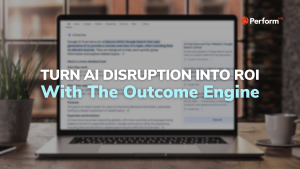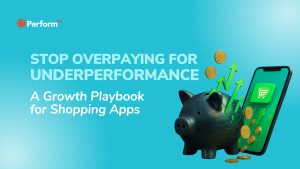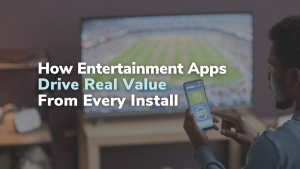- All, Featured, Outcome-Based Marketing, Outcome-Based Marketing Blog, Performance Marketing
How Insurance Marketers Can Lower CPL Without Sacrificing Lead Quality
- Perform[cb]

Table of Contents
Marketing in the insurance industry is a high-stakes arena, especially when budgets tighten and as the competitive landscape grows. Every lead counts, and so does every dollar spent acquiring it. That puts marketers in a tough position: how do you find new ways to reduce acquisition costs without sacrificing lead quality?
It’s tempting to zero in on CPL as the key metric, but CPL alone doesn’t tell the whole story. A low CPL might look impressive on a dashboard, but if those leads don’t convert or retain, you’re simply trading visible savings for hidden costs in refunds, follow-up waste, and missed opportunities.
Instead of chasing cheaper leads, insurance marketers can lower CPL the right way – by improving targeting across channels and leveraging smarter data. When you combine precision audience segmentation, behavioral insights, and real-time optimization, you don’t just reduce spend, you increase efficiency.
Why Lower CPL Isn’t Always Better—Until It Is
Not all low-cost leads convert, and high-value leads can be challenging to scale. Chasing the lowest CPL can backfire if those bargain-basement leads never convert. A lead that costs next to nothing isn’t worth much if it abandons the quote process, fails underwriting, or drops out before renewal. Conversely, targeting only the highest-value audiences can drive your CPL to unsustainable levels and leave you without the volume you need to meet your overall revenue goals.
Insurance marketers juggle three moving parts at once:
- Fluctuating conversion rates: A campaign’s conversion performance can swing wildly based on market conditions, seasonality, or even minor creative tweaks.
- Wasted budget on low-intent leads: Pouring dollars into broad audiences often yields clicks that disappear before they become policies.
- Inefficiencies in routing or qualification: Without seamless handoffs and rapid lead scoring, even good prospects can slip through the cracks or be misqualified.
The real art is triangulating CPL, lead quality, and scale – finding that sweet spot where you generate enough volume of genuinely qualified prospects at a cost that still moves the needle on profitability.
Moving Beyond Surface Metrics with Precision Targeting
Precision targeting goes far deeper than simple demographics or generic campaign buckets. By breaking your audience into ultra-specific segments – whether it’s homeowners in high-risk ZIP codes, professionals approaching retirement, or families with growing incomes – you can ensure every message lands where it’s most relevant.
This granular segmentation feeds real-time bid and channel adjustments. Instead of spreading budget evenly across all channels, you can dynamically increase bids for underpriced, high-intent audiences on Facebook, scale back spend on underperforming Google Search keywords, or shift resources into emerging performance channels showing early promise. The result is a campaign that continually optimizes toward lower waste and higher impact.
Precision targeting also aligns each lead source with down-funnel performance. When you connect attribution data, like quote completion rates and policy bind ratios, you stop guessing which channels are driving true value. You invest where you see clear ROI, and cut spend where you don’t, all without sacrificing volume or sending CPL through the roof.
That’s exactly what the Outcome Engine delivers. Powered by built-in AI trained on 63 billion data points and advanced precision-targeting algorithms, it identifies and engages audiences most likely to convert into profitable policies. For one leading life and finance insurance brand, this meant their inbound calls were laser-aligned with their ideal customer profile, driving a 56% lift in conversion rate in just one month, all while keeping CPL steady.
Intent-Based Targeting: From Clicks to Conversions
In today’s digital landscape, intent behavior is the new demographic focus. Rather than lumping prospects into broad age or income brackets, intent-based targeting zeroes in on real-time signals, such as search queries that reveal coverage questions, time-on-site patterns that hint at genuine interest, or call triggers that indicate urgency. These behavioral breadcrumbs give insurance marketers the context they need to distinguish a casual browser from a ready-to-buy prospect.
Using intent-based targeting delivers three immediate advantages:
- Higher conversion rates by prioritizing budget on users who’ve demonstrated clear purchase intent.
- Reduced spend on unqualified leads by throttling back or excluding audiences with low engagement signals.
- Smarter campaign routing, ensuring that your hottest prospects are fast-tracked to the most effective channels or agents rather than sitting in a generic nurture stream.
The Outcome Engine turns these principles into practice. With tiered targeting driven by live behavioral feeds, it segments audiences by intent, allocating budget to the users most likely to become new customers. Paired with a database of billions of historical industry data points, marketers gain a competitive edge by spotting the patterns and trends that spark engagement. The result is a seamless, intelligent funnel that attracts the highest-quality leads and converts them at scale previously thought impossible.
Scaling Without Slipping: Real-Time Optimization in Action
As your insurance campaigns grow, small inefficiencies can multiply into major budget leaks. Every new channel, creative variation, or audience segment introduces another variable that must be constantly fine-tuned. With over 40% of ad spend wasted without real-time optimization, failing to adjust on the fly means overspending on underperformers, misrouting prime prospects, and missing peak-demand windows – any of which can send your CPL soaring.
The Outcome Engine operates as a constant optimization loop. It continuously adjusts targeting parameters in real time, boosting spend where performance is strongest and pulling back where it’s not. Immediately after each click or call, it analyzes lead-quality signals to surface the most potent combinations of audience, timing, and channel. The result is a self-optimizing funnel that holds CPL steady even as lead volume adjusts.
In practice, this means marketers can scale confidently. For one leading insurance marketplace, the Outcome Engine’s AI pinpointed the top traffic sources at peak conversion moments. Paired with a CPL-based SMS campaign and a custom landing page, real-time optimizations drove a 13% jump in conversions and delivered over 44,000 qualified leads in a single quarter.
Don’t Just Perform. Outperform.
When you combine precision targeting, real-time intent signals, and continuous optimization, every dollar works harder, your highest-intent prospects rise to the top, and your funnel scales without driving up CPL.
Delivering over 750,000 monthly leads and calls to insurance brands, Perform[cb] helps marketers access high-intent prospects across multiple channels, driving meaningful customer engagement and sustainable growth. Discover how the Perform[cb] Outcome Engine can help you optimize lead gen for cost-efficiency and quality at scale.








